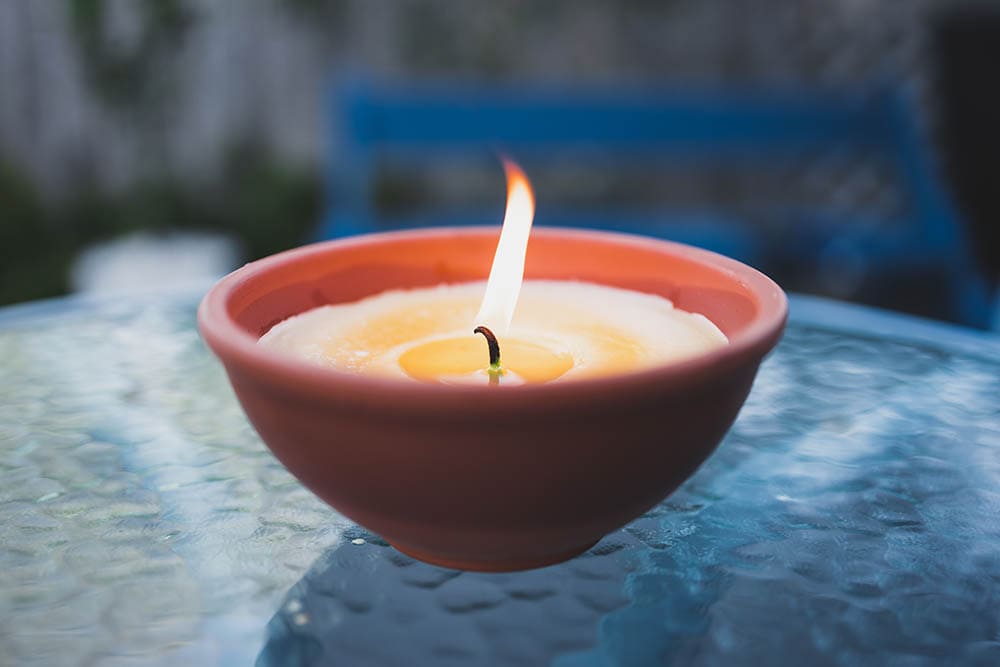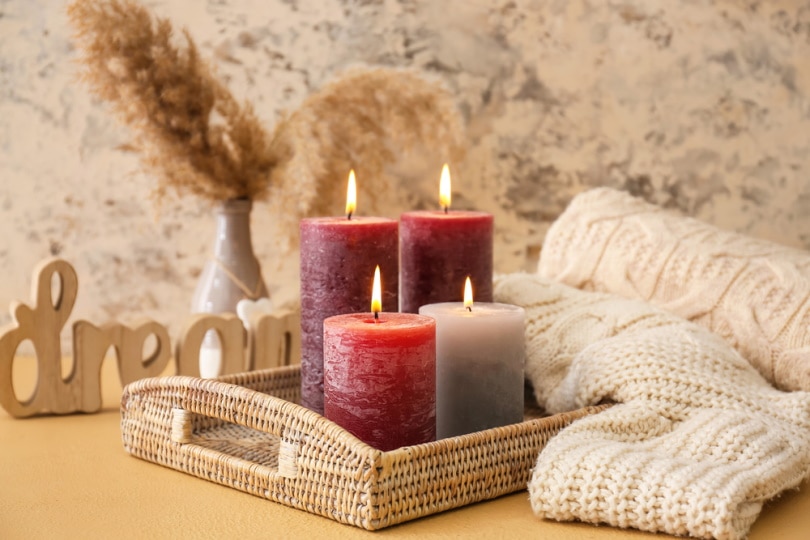How Do Candles Work? Everything You Need To Know!
-
Pete Ortiz
- Last updated:

Introduction
The last time you lit a candle, did you take the time to think about how it works? At first, it seems simple, but the more you dive into how a candle works, the more you start to understand how impressive it is.
Here, we break down exactly how candles work, the different types of candles available, where you can find them, and plenty more.
How Does It Work?
Wax candles might not seem like much, but every time you light the wick, there’s a complex scientific process that goes into keeping it burning. When the wick is lit, the heat from the burning wick melts the nearby wax.
As the nearby wax melts, capillary action draws the wax up the wick and into the flame. The flame then vaporizes the liquid wax, turning it into a gas. This process creates more heat, melting more of the surrounding wax.
As long as there’s liquid wax, it will work its way up the wick and into the flame. Once everything gets going, it’s a stable reaction, giving off a consistent teardrop flame. That said, right after you light the candle, it’s normal to see more soot and for the flame to flicker as the process stabilizes.

What Are the Different Types of Candles?
There are many types of candles to pick from, including pillar candles, floating candles, tea lights, fuel cartridges, and wax candles. There are also different types of waxes and wicks.
Pillar, floating, and tea candles refer to the type of candle, specifically the shape and size. Different-sized and -shaped candles have different benefits and drawbacks.
Also, fuel candles work differently than wax candles in that they constantly push the burning material into the correct area. Wax candles burn down, while fuel candles always burn in the same location.
There are many different wax options out there for wax candles, and popular ones include beeswax, paraffin, soy, palm, liquid, and bayberry wax. Each has its own burn times, scents, and level of pollutants, but they all work in the same way.
There are three main types of candle wicks: wood, cotton, and metal. Wood wicks are typically the go-to choice for small candles where you want minimal wax melting. Cotton wicks help melt a large amount of wax, while metal wicks are the most common types because of their long-lasting and consistent look.

Where Are They Used?
Candles used to be the primary source of light and heat in people’s homes, but with the invention of electricity, they have taken more of a backseat. Today, you can find candles in religious ceremonies, in emergency supply kits, and as ambiance setters for parties and romantic outings.
Many candles now come with aromas, so as they burn, the scent is released. This is one of the primary purposes of modern candles.
That said, candles still work for a wide range of settings; you just need to figure out how you want to use them!
Advantages of Candles
While candles are no longer the primary source of heat and light for most homes, they still have their advantages. First, they don’t rely on any external power grid. If you have a candle and a way to light it, you can use it! This is why candles are great additions to most emergency kits.
Another advantage is that they emit a soft light and usually a pleasant aroma. They also give off light in a way that traditional lightbulbs can’t match, making them great mood setters.

Disadvantages of Candles
The primary disadvantage of a candle is that it doesn’t last long and you will need to replace it. Also, a candle as a primary source of heat and light is not quite as effective as electricity.
Finally, while there are few safety concerns with a candle if you use it properly, it’s still an open flame. There’s a chance that it can spread to an area where you don’t want it. This is why you should never leave a lit candle unattended.
Frequently Asked Questions (FAQs)
While candles might seem simple at first, the more you learn about them, the more questions you may have. Here are a few answers for you!
Where Does the Wax Go When You Burn a Candle?
When you burn a candle, the wax travels up the wick. The flame doesn’t travel to the wax, the wax travels to the flame!

What Three Things Does a Candle Need to Burn?
To make a fire, a candle needs three things: oxygen, fuel, and heat. If you remove any of these elements, the flame will go out and the candle won’t burn. However, candles make these things in different ways. Most wax candles pull the oxygen from the air and the fuel from the wax, and the wick provides the initial heat.
How Do Scented Candles Work?
Scented candles work the same way as regular candles, except there’s an essential oil or another scent integrated into the wax. As the wax burns, it releases the scent.
Do You Breathe in Candle Wax?
While it’s technically possible for you to breathe in candle wax, it’s extremely unlikely. Candles work in a balanced and efficient way that releases carbon dioxide and water into the air. Unless there’s a problem with the way that the candle is burning, you won’t breathe in any wax.
Conclusion
Now that you know more about candles, the next time that you decide to light one, you can appreciate all the science that goes into the process. A candle might not seem like much while it’s burning, but there’s quite a bit going on that’s producing that beautiful and consistent teardrop flame.
See also:
- 5 Dryer Sheets Alternatives (That Actually Work)
- How To Use Laundry Detergent Pods (Types & Advantages)
Featured Image Credit: faithie, Shutterstock
Contents



